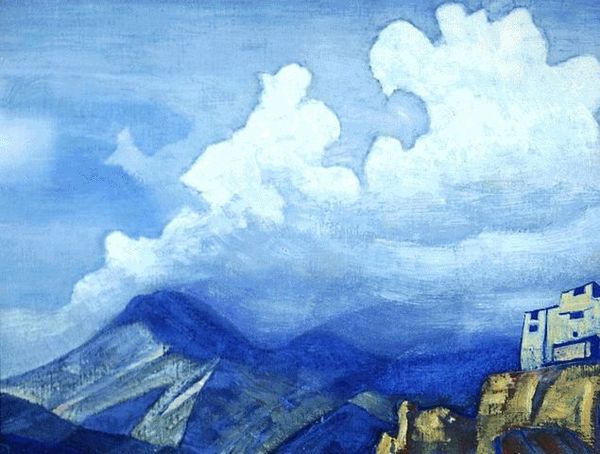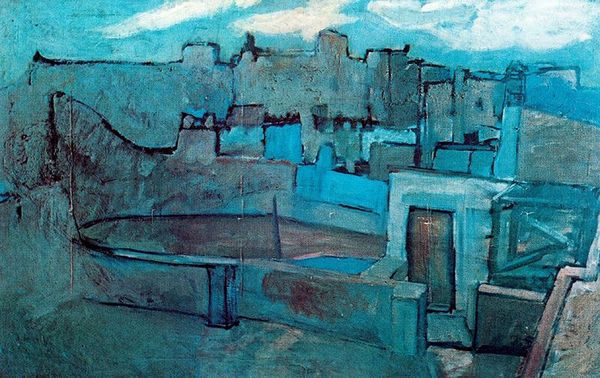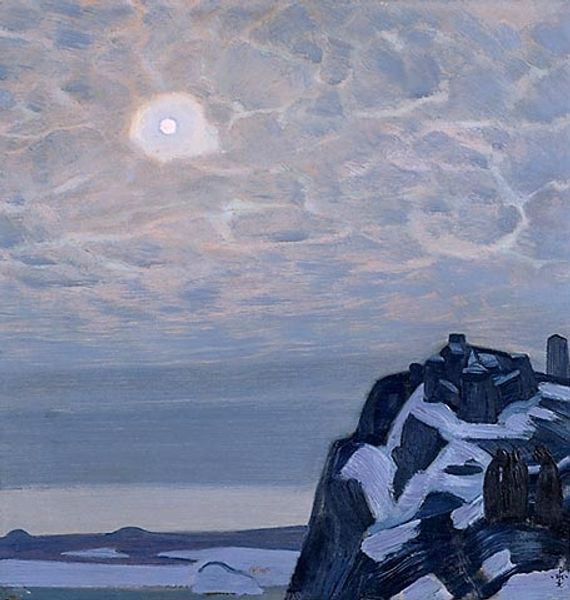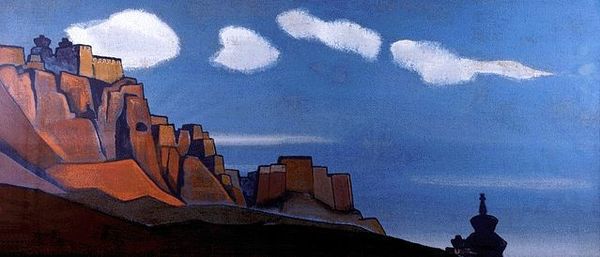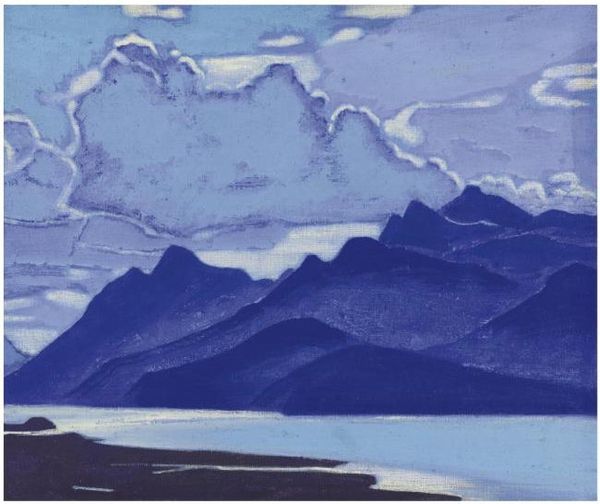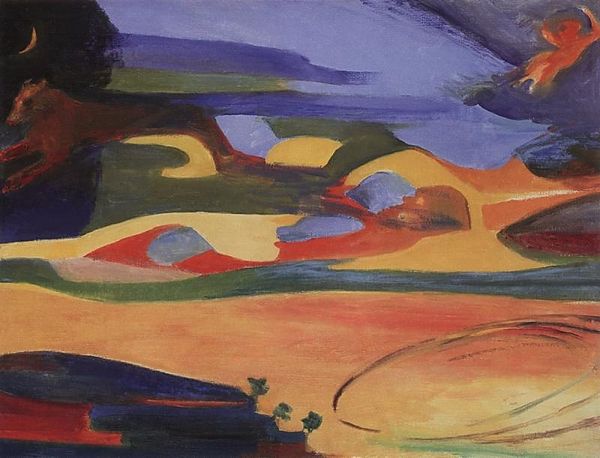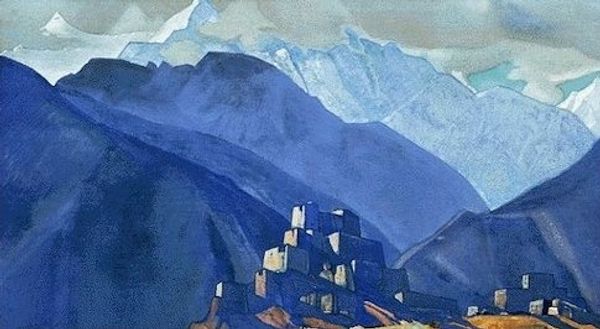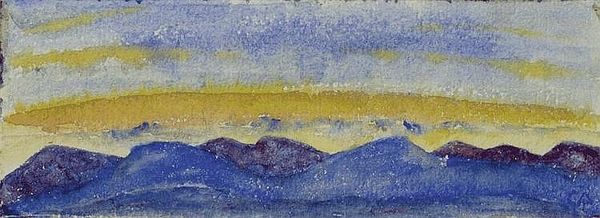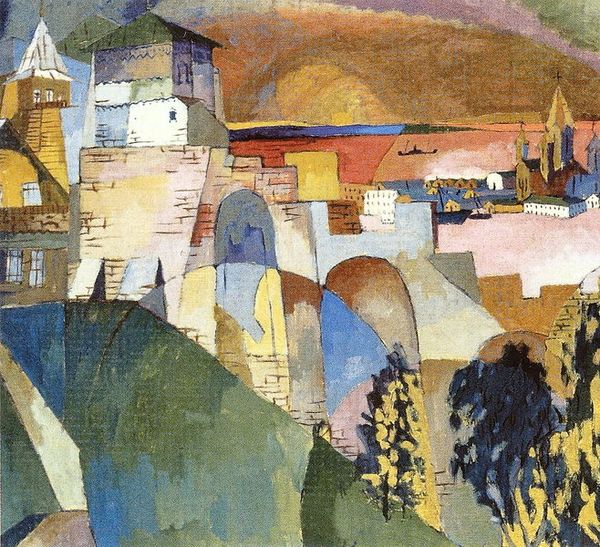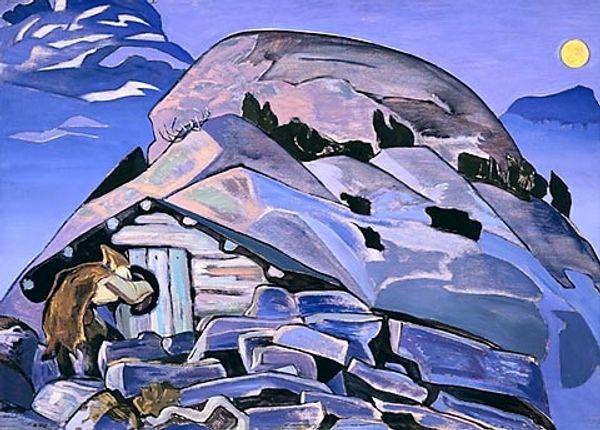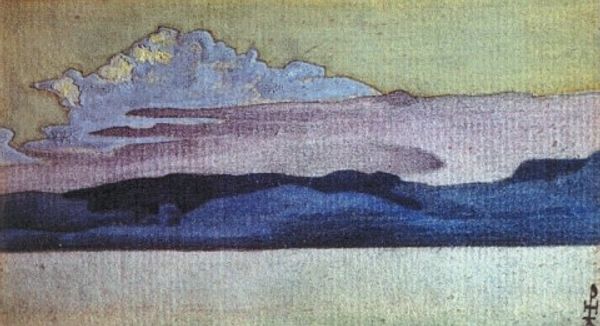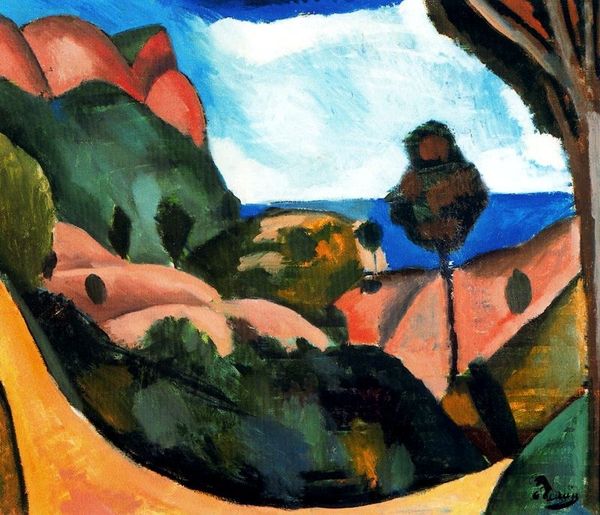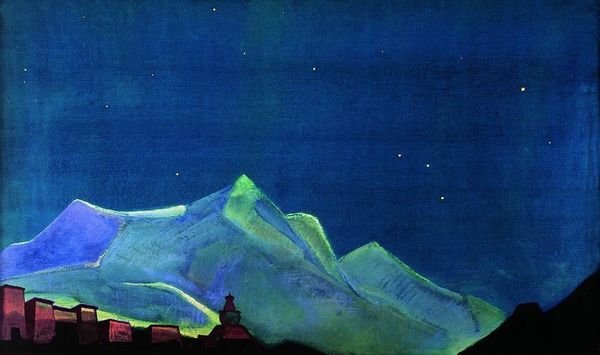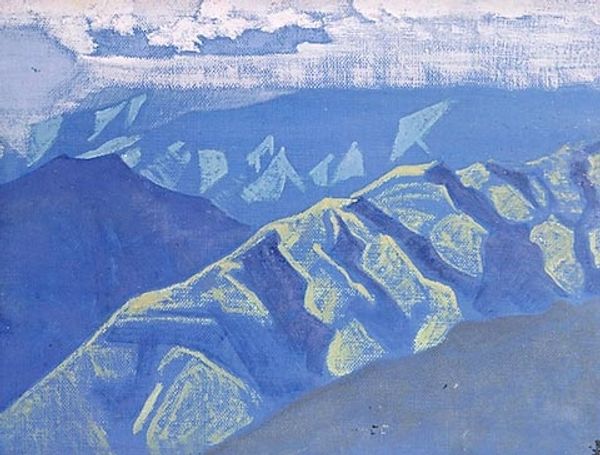
Copyright: Public domain
Editor: This tempera painting, "Monastery in the Mountains" by Nicholas Roerich, dated 1931, presents a rather serene, almost otherworldly scene. The simplified architectural forms layered beneath those clouds feel incredibly solid, grounded in a way that contrasts sharply with the ephemeral sky. What stands out to you in this work? Curator: Roerich’s deliberate use of tempera, a fast-drying medium requiring meticulous preparation, speaks volumes about the artist's intention. The very act of creating these works, especially considering the large-scale murals he produced, becomes a crucial element. Think about the physical labor involved, the sourcing of pigments, the layering—it’s all contributing to this idea of permanence, resilience even, that resonates with the theme of a monastery enduring across time and culture. How do you see this medium contributing to the narrative? Editor: I hadn't considered the medium quite that deeply, I suppose, but I now notice a tangible link to traditional mural painting, almost like he's echoing that in a smaller, more accessible way. Does the simplification you mentioned factor into this focus on the material itself? Curator: Absolutely. By stripping away excess detail and focusing on geometric forms and flat planes of colour, Roerich directs our attention to the materiality. These choices push the work beyond simple representation and toward something more symbolic, something deeply rooted in a cultural and historical context of material scarcity and resourcefulness. What impact does knowing it’s tempera rather than oil, say, change your view? Editor: I guess it makes me think about the resources he had at hand and what making art, or a space for spirituality, really meant in that place and time. I see it differently now! Curator: Precisely! That attention to production, material conditions, and how those shape the aesthetic, helps reveal the work's profound layers of meaning. It’s about the intersection of labor, landscape, and belief, solidified through material engagement.
Comments
No comments
Be the first to comment and join the conversation on the ultimate creative platform.
